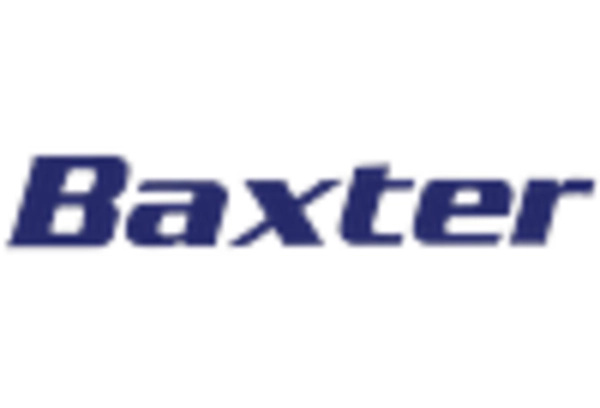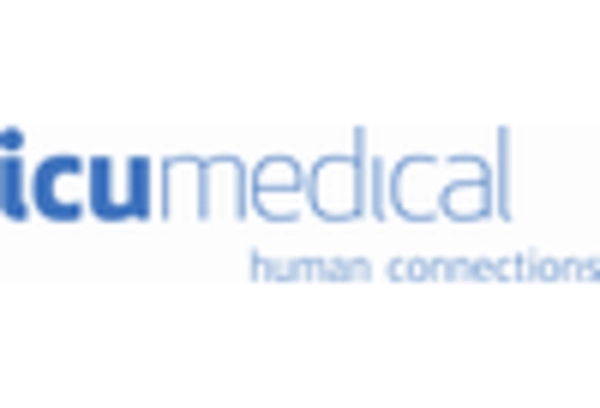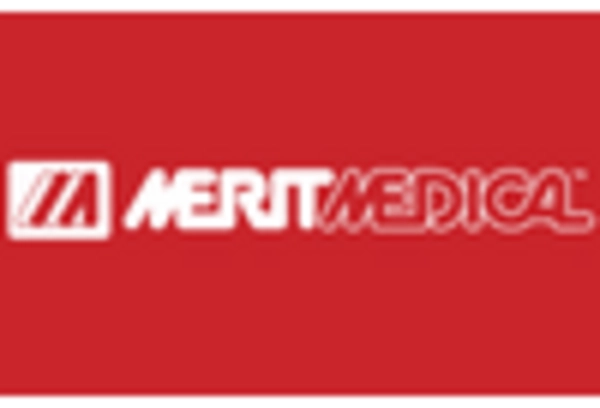The closed system-drug-transfer-device market is currently characterized by a competitive landscape that is both dynamic and multifaceted. Key growth drivers include the increasing emphasis on patient safety, regulatory compliance, and the rising prevalence of chronic diseases. Major players such as Baxter International Inc (US), B. Braun Melsungen AG (DE), and ICU Medical Inc (US) are strategically positioned to leverage innovation and technological advancements. Baxter International Inc (US) focuses on enhancing its product portfolio through continuous research and development, while B. Braun Melsungen AG (DE) emphasizes regional expansion and partnerships to strengthen its market presence. ICU Medical Inc (US) appears to be concentrating on digital transformation initiatives, which collectively shape a competitive environment that is increasingly reliant on technological integration and strategic collaborations.
In terms of business tactics, companies are localizing manufacturing and optimizing supply chains to enhance operational efficiency. The market structure is moderately fragmented, with several key players exerting considerable influence. This fragmentation allows for a diverse range of products and solutions, catering to various healthcare needs. The collective strategies of these companies indicate a trend towards consolidation and collaboration, as they seek to enhance their competitive edge in a rapidly evolving market.
In October 2025, Baxter International Inc (US) announced a strategic partnership with a leading technology firm to develop advanced drug delivery systems that integrate AI capabilities. This move is significant as it positions Baxter at the forefront of innovation, potentially enhancing patient outcomes and operational efficiencies. The integration of AI into drug delivery systems may streamline processes and reduce the risk of medication errors, thereby reinforcing Baxter's commitment to patient safety.
In September 2025, B. Braun Melsungen AG (DE) launched a new line of closed system-drug-transfer devices designed specifically for oncology applications. This product launch is noteworthy as it addresses a critical need in the market, catering to the growing demand for safe and effective drug delivery solutions in cancer treatment. By focusing on oncology, B. Braun is likely to capture a significant share of this niche market, further solidifying its competitive position.
In August 2025, ICU Medical Inc (US) expanded its manufacturing capabilities by investing in a new facility dedicated to the production of closed system-drug-transfer devices. This expansion is indicative of ICU Medical's commitment to meeting the increasing demand for these devices, particularly in the GCC region. By enhancing its production capacity, ICU Medical is poised to improve supply chain reliability and respond more effectively to market needs.
As of November 2025, current competitive trends in the closed system-drug-transfer-device market include a strong focus on digitalization, sustainability, and the integration of AI technologies. Strategic alliances are increasingly shaping the landscape, as companies recognize the value of collaboration in driving innovation. Looking ahead, competitive differentiation is likely to evolve from traditional price-based competition to a focus on technological advancements, innovation, and supply chain reliability. This shift underscores the importance of adaptability and forward-thinking strategies in maintaining a competitive edge in the market.

















Leave a Comment